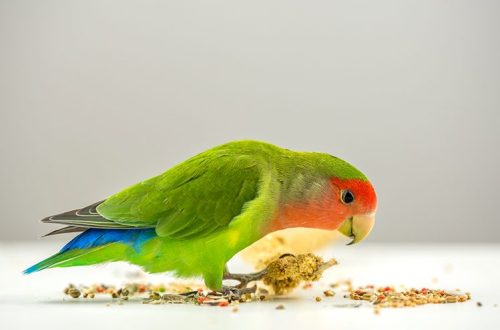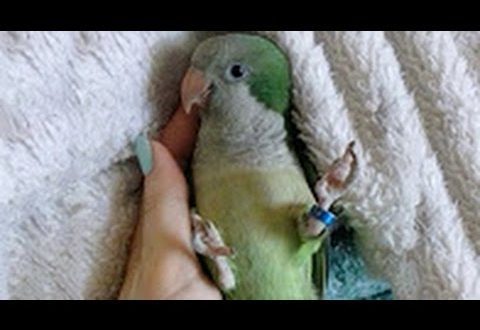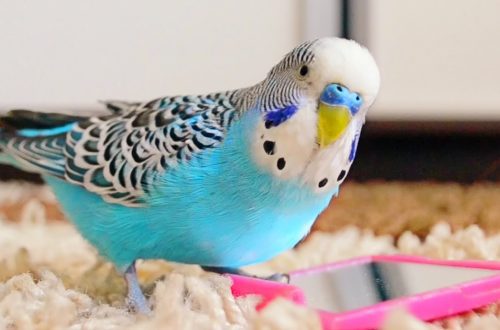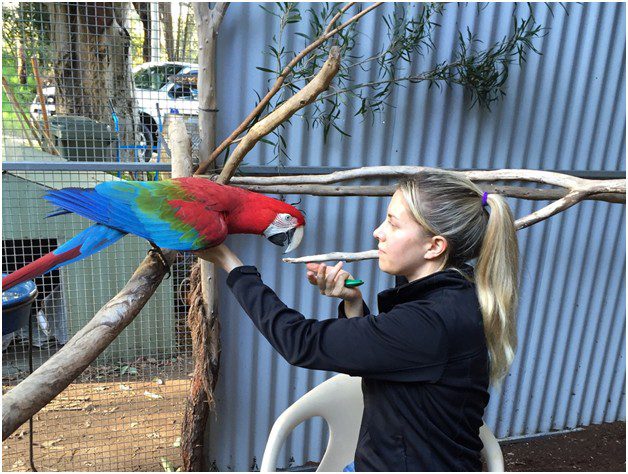
Education and training of parrots
Parrots are wonderful pets with whom it is very interesting to “communicate” and just spend time. These are active, inquisitive and purposeful “comrades in games and entertainment.” A parrot can be taught a wide variety of tricks and actions that will please both of you, and the guests who come will simply be blown away. He can learn to push a cart, “ride” a motorcycle or skateboard, play basketball, dance, and so on. Borders don’t exist.
Teaching a parrot different tricks
Often, the behavior of a feathered person leads a person to extreme amazement because of his logical, and most importantly, “used to the place” actions. Scientists who compare the intelligences of different animals have come to an interesting and intriguing conclusion: the mind of parrots is not inferior to the mind of dolphins and chimpanzees. Only the latter will never learn to speak “in human language”, and parrots even do this quite well. Of course, all this is more about large parrots, and small and medium ones are a little behind in this rivalry for intellectual leadership, but they are also capable of a lot.
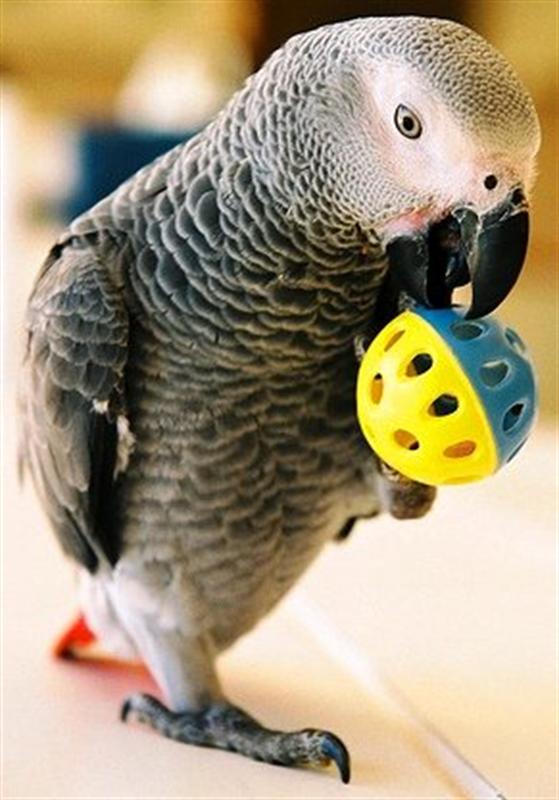
We “rub in” in trust
Before you start training, you need to tame your pet. Most importantly, the parrot should not feel the slightest fear towards you. Fear is your main problem on the road to success. Therefore, you should be patient and act according to the scheme:
1. Be present when eating a parrot.
He must learn to eat food in your presence without fear.
2. Teach the parrot to take treats from your hands.
At first, you can try to push small pieces through the bars of the cage and keep it that way.
for a while. Over time, the parrot will overcome fear and come to the hand. Repeat and reinforce it
exercise for several days (about a week) until completely addictive.
3. The final step is getting used to the hand.
As soon as you manage to take the parrot out of the cage on your hand or the food offered
directly on the hand, consider that the result has been achieved. Your pet has become tame.
parrot training
A parrot is a bird that requires self-expression. Therefore, in order to get out of this feeling, you need to watch your feathered one, understand what games and entertainment he likes, and further develop these particular skills and abilities. Of course, it is best to start training chicks at the age of 3-4 months. When training or training, there is also a certain win-win scheme:
1. Consolidation of the material (skills / skills) covered yesterday.
2. Learning new things.
3. Consolidation of new skills.
4. Repetition of everything passed.
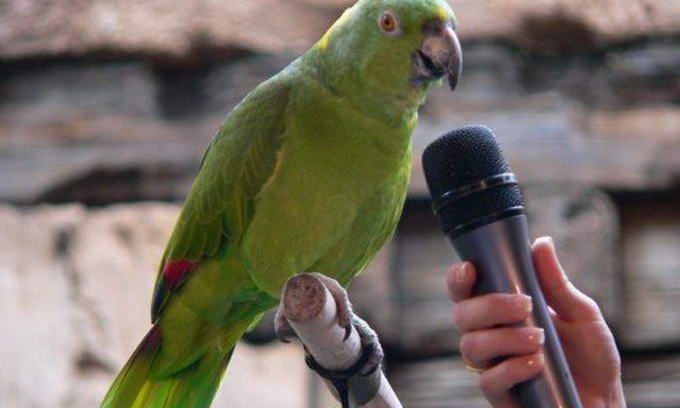
Such activities undoubtedly strengthen the connection between the bird and the person, each time acquiring deeper and more trusting notes. Soon the fear will completely disappear. Your pet realizes that communication with you is fraught with only positive emotions for him:
• Interesting pastime.
• Knowledge of the new.
• Getting a favorite treat.
When training and any other activities, you should remember the obligatory and immutable rule: the bird is inviolable. In no case, when training (and any other time) do not take a parrot by the wing, paw or tail This will be taken as an attack. The insult will not soon be forgotten. Remember that only the bird and no one else determines the distance between you.
Particular attention should be paid to the duration of the classes. At first it can be 5-15 minutes, then the exercises can go up to an hour – it all depends on the desire of the bird. In the future, the bird itself will come to your desktop, showing everything that it has learned, thereby demonstrating a desire to work out. If you notice that the bird is sitting with its back or side to you, looking askance, it means that it does not want to communicate at the moment, let alone play. Don’t insist. Learn to understand bird body language.
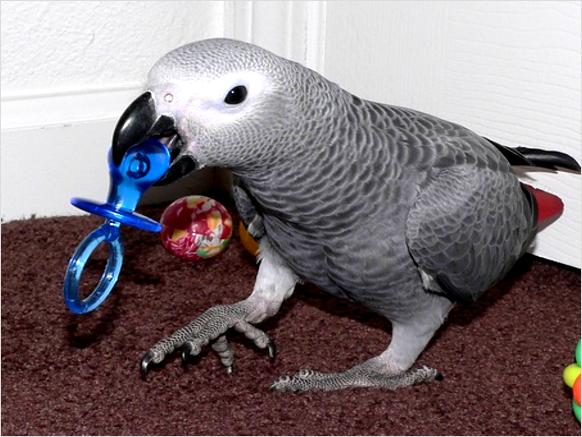
Lessons should take place in a separate room, preferably in private. The “teacher” should always be the same, then it will be easier for the parrot to perceive information and perform the assigned tasks. After each correct completion of the task, a treat or some kind of verbal encouragement must necessarily follow. Words of praise should also be the same, even the same intonation is desirable. If you follow all the recommendations, success is guaranteed to you.
What can help us?
You should also remember about various convenient devices that improve training. Such a device is a clicker.
A clicker is a device that makes a “click” sound when used. Most often, this is a thin metal plate placed in a plastic case, which can be of any color. Clicker training is a convenient training innovation. The sound of this device is used as a signal that indicates that the exercise was performed correctly and now there will be a reward. The clicker is like a bridge that bridges the time gap between doing the right thing and receiving positive reinforcement, which for the parrot means “Well done!” and now get a treat. Using a clicker is very convenient, since its signal is always the same and your pet will not confuse it with anything.
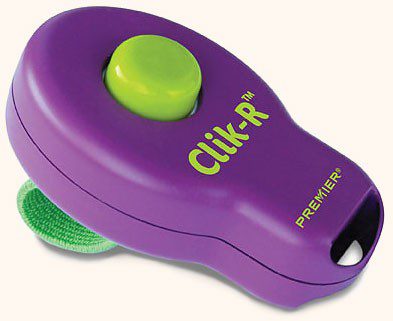
Instead of a clicker, you can, of course, use just verbal praise (“Good girl!”, “Good”, etc.). But then you will have to rehearse the intonation and tone of the voice, since the word/sound must always be the same for your praise to turn into a bridge: exercise/correct action/clicker or praise/treat.
Of course, teaching your pet tricks and various tricks is troublesome and requires a lot of patience and perseverance. But the result is worth it.



